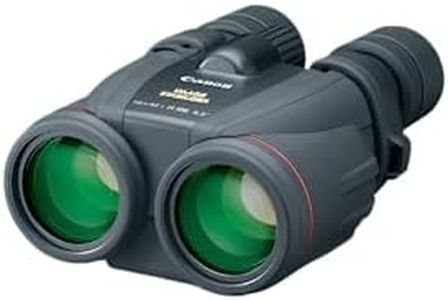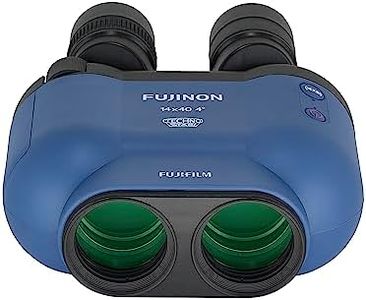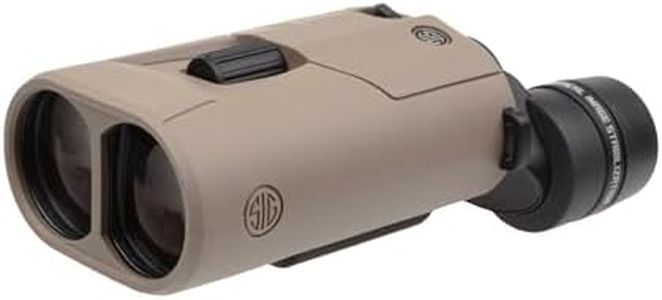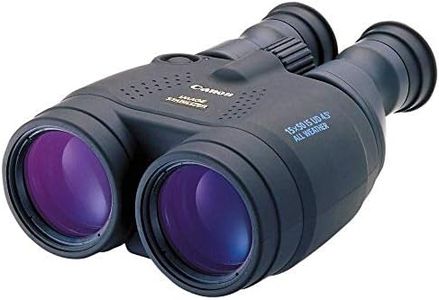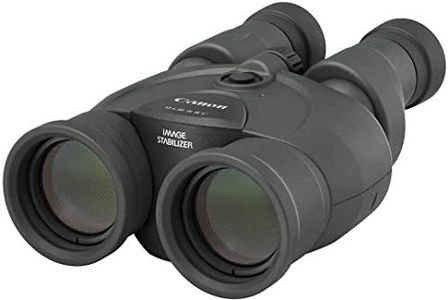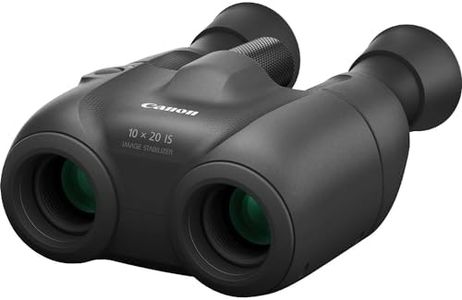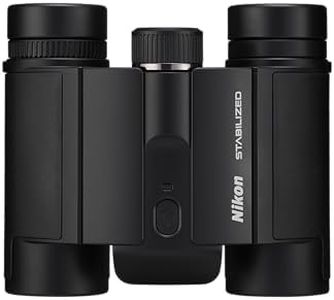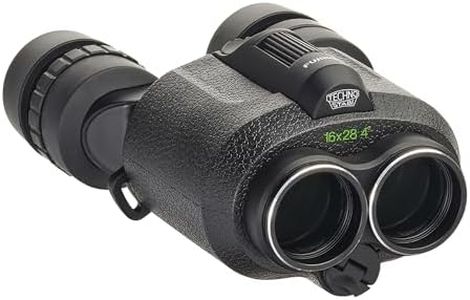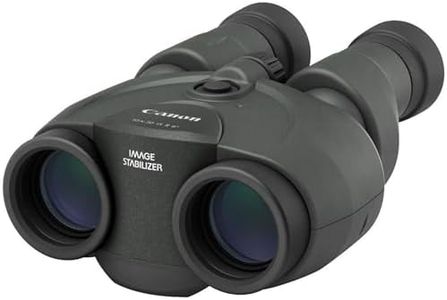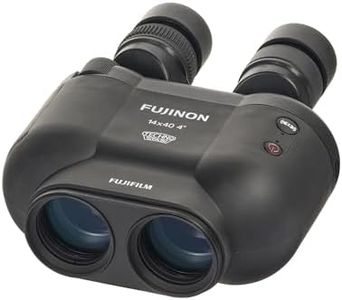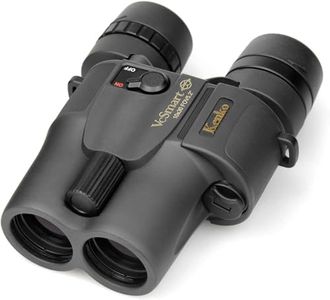We Use CookiesWe use cookies to enhance the security, performance,
functionality and for analytical and promotional activities. By continuing to browse this site you
are agreeing to our privacy policy
10 Best Image Stabilized Binoculars
From leading brands and best sellers available on the web.Buying Guide for the Best Image Stabilized Binoculars
Choosing image-stabilized binoculars can significantly improve your viewing experience, especially if you're watching distant objects or using higher magnifications. These binoculars use technology to minimize the shakiness caused by hand movements, allowing for clearer, steadier images. When looking for the right model, it’s important to focus on your intended use—whether it's for birdwatching, stargazing, boating, or sports events—as different activities might require different features. Understanding the main specifications will help you make a choice that improves both comfort and image quality.MagnificationMagnification describes how much closer an object will appear compared to your naked eye. For example, 10x means things will look ten times closer. Higher magnification lets you see more detail, but it also makes images shakier, which is why image stabilization is especially useful at higher powers. Lower magnifications (around 8x to 10x) are good for general use and easier to hold steady, while higher (12x and above) are helpful for detailed viewing—though the more powerful you go, the more reliant you'll be on effective stabilization. Consider what and how you'll be viewing most: if quick scanning and wide views are needed, stick with lower magnification; for detailed, long-distance observation, choose higher but make sure the stabilization is robust.
Objective Lens DiameterThe objective lens diameter, measured in millimeters, is the size of the front lenses. It determines how much light the binoculars can gather—a bigger lens lets in more light, which can give you brighter and clearer images, especially in low-light conditions like dawn or dusk. Small diameters (under 30mm) make the binoculars more compact and lightweight, while medium (30-42mm) offers a good balance for most uses. Larger sizes (over 42mm) are best for low-light or astronomical use but make the unit heavier. Think about when and where you'll use them: for daytime activities, smaller may suffice, but for twilight or night viewing, a bigger lens is better.
Image Stabilization MechanismThis refers to the technology that reduces the effects of hand-shake. Different binoculars use different tricks—optical stabilization moves glass elements to cancel out shake, while electronic stabilization detects movement and compensates electronically. Some systems respond instantly and work for a wide range of movements, while others are more basic. If you'll use the binoculars on shaky boats or with high magnification, look for advanced stabilization. If your use is mostly on stable ground or with lower powers, simpler systems may be enough. Test how quickly and smoothly the view settles, as this can vary widely.
Weight and ErgonomicsWeight and how the binoculars feel in your hands can greatly affect your comfort during long viewing sessions. Heavier binoculars are often more stable on their own but can be tiring to hold, especially for extended use. Lightweight models are easier to carry and handle, but may sacrifice some features like large objective lenses. Consider how long you’ll typically use them without breaks: for brief looks or travel, lightweight is better; for dedicated sessions from a fixed spot, extra weight—and perhaps a harness or tripod compatibility—may be worthwhile.
Field of ViewField of view tells you how wide an area you can see at a glance, often described in feet at 1,000 yards or as an angle in degrees. A wider field of view is useful for tracking moving subjects or scanning large areas, while a narrow field zooms in on a small area for detailed observation. Lower magnifications generally offer wider fields, while higher magnifications and large objective lenses might narrow it. Choose based on your activities: if following birds or watching sports, wide is better; for still targets or astronomy, a narrower, more focused view may be acceptable.
Battery Life and Power SourceBecause image stabilization needs power, it’s important to consider how the binoculars are powered—usually with replaceable or rechargeable batteries. Longer battery life means less frequent changes and worry about losing stabilization mid-use. Some models offer auto-off features to save power. If you’ll be far from power for long periods, prioritize a model with long battery life or common battery types. For frequent, short outings, this may be less important.
